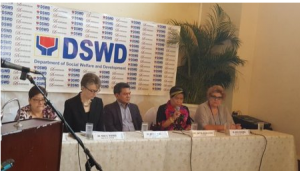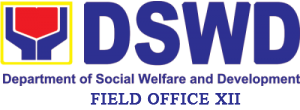
The Department of Social Welfare and Development (DSWD) launched the updated database of poor households in the country through the Listahanan or NHTS-PR. In preparation, the department reviewed the methodologies associated with the Proxy Means Test (PMT) models used in the targeting process, particularly to find alternative (additional) variables that are beneficial in identifying the poor and non-poor households.
DSWD Secretary Corazon Juliano-Soliman during the launching of the database said: “It is beneficiaries’ situation that dictates the services to be given to them. The government actually is able to focus its resources to those who need it the most.”
Australian Ambassador to the Philippines, Amanda Gorely said that “Listahanan has become a major database of core social protection programs.”
A total of 5,116,976 were identified poor households out of the 15,128,643 households assessed nationwide. Urban areas got a percentage share of 23.4% or 1,195,073 identified poor households while rural areas got a percentage share of 76.6% or 3,921,903 identified poor households. This translates to 14% decrease in poverty rate as compared to the results of the first assessment in the year 2009.

Consistently, the national launching of the Listahanan database strengthens the active partnership between the department and its stakeholders such us the World Bank and other national government agencies.
In Region XII with a nationwide share of 7.0 percentage or 358,132 poor households were identified poor out of 800,653 assessed households while ARMM with a nationwide share of 11.2 percentage or 573,446 poor households were identified poor out of 925,957 assessed households.
The Field Office XII shall conduct the Regional Launching of the database for SOCCSKSARGEN and ARMM after the 2016 elections.
Dr. Dennis S. Mapa, Dean and Professor, School of Statistics, University of the Philippines Diliman shared significant innovations about the proxy means test (PMT) model and explanatory variables in the PMT models:
- The PMT model is a statistical method used to predict the per capita income of a household based on observable characteristics that determines the per capita income of the household.
- In lieu of the household’s actual per capita income, its predicted per capita income from the PMT model is used and compare with the official poverty threshold generated by the Philippine Statistics Authority (PSA).
- The household is classified as POOR when the predicted per capita income from the PMT model is less than the official poverty threshold, otherwise, the household is classified as NON-POOR.
- A total of 139 variables are identified as potential explanatory variables for the household’s per capita income; 45 variables are from the FIES, 53 variables from the LFS and 41 variables from the CPH.
Bai Zorahayda Tanggol Taha said that local government units, national government agencies, non-government organizations are encouraged to utilize the updated database in identifying poor households who shall be recipients of their social protection programs and enter into memorandum of agreement with the department to access that list of poor household. Data sets shall be turned-over once the MOA is signed by the DSWD Secretary.
